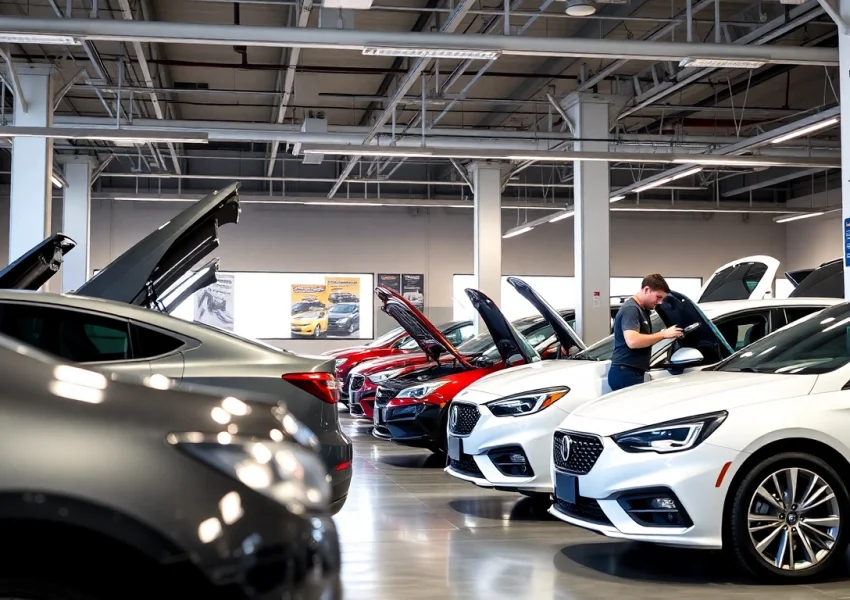Understanding What Makes the Perfect Car
Choosing the perfect car is a subjective journey, often influenced by personal needs, tastes, and practical considerations. What might be perfect for one person could be a poor fit for another. Therefore, defining the perfect car requires exploration into various aspects, from performance and aesthetics to safety features and fuel efficiency.
Defining the Perfect Car
The concept of a “perfect car” varies from individual to individual. It can encapsulate a range of criteria including reliability, aesthetic appeal, and the driving experience. Some may prioritize speed and handling, while others might focus on comfort and technology. To succinctly define the perfect vehicle, we need a holistic understanding that encompasses these diverse aspects.
Key Features Drivers Value
According to various surveys and studies, key features that drivers often consider important include:
- Fuel Efficiency: The rising cost of fuel makes this a top priority for many car buyers.
- Safety Ratings: Advanced safety features like automatic braking and lane departure warning can be critical.
- Technology: Infotainment systems, smartphone connectivity, and driver assistance technologies are increasingly desired.
- Space and Comfort: Depending on family size or lifestyle, seating capacity and comfort features can be vital.
- Performance: Drivers often look for vehicles that offer a blend of speed and great handling.
How Personal Preferences Shape Your Choice
Each driver has unique preferences shaped by their lifestyle, experiences, and even cultural background. For example, a family with children might lean towards spacious SUVs or minivans, while a single professional might prefer a sporty coupe. These individual differences highlight the subjective nature of what constitutes the “perfect car.”
Assessing Your Needs for the Perfect Car
Assessing your specific needs is a crucial first step in the journey to finding the perfect car. This involves reflection on several factors, including your daily commute, the size of your family, and your budget.
Identifying Your Driving Habits
Consider how you use your car most frequently. Do you commute long distances, use it for weekend trips, or need it for city driving? Understanding your driving habits helps in selecting the right type of vehicle. For instance, a commuter may benefit from a fuel-efficient sedan, while someone frequently taking longer trips may prefer the comfort of an SUV or crossover.
Budgeting for Your Perfect Car
Your budget directly impacts your options. It’s important to consider both the purchase price and ongoing costs such as insurance, maintenance, and fuel economy. Setting a realistic budget is paramount, as it can set limits on how extensive your search can be and what features are desirable and attainable.
Understanding Different Vehicle Types
The market offers a variety of vehicle types including sedans, SUVs, trucks, and hybrids. Each type comes with its own set of advantages and compromises. For example:
- Cars: Generally provide better fuel efficiency.
- SUVs: Offer more space and potential off-road capability.
- Trucks: Ideal for towing and carrying heavy loads.
- Hybrids/Electric Vehicles: Excellent for reducing fuel costs and environmental impact.
Researching Options for Finding the Perfect Car
Having identified your needs, the next step is to conduct thorough research. This will involve exploring various makes and models that fit your criteria.
Using Online Tools Effectively
Numerous online tools can simplify your search for the perfect car. Websites like Kelley Blue Book offer car comparison tools that allow you to filter by features and pricing, making it easier to narrow down your options. Utilizing these resources enables you to view cars that meet your needs and helps in understanding average prices.
Gathering Reviews and Recommendations
Reading reviews from other consumers and professional reviewers can provide insights into real-world performance and reliability of vehicles. Sites such as Edmunds and Cars.com feature extensive customer reviews and expert opinions, which can help you gauge satisfaction levels and common issues.
Comparing Specs and Features
Once you have a shortlist, it’s essential to compare specifications and features side by side. Pay attention to horsepower, torque, safety ratings, and technological features. Using a comparison chart can aid in making an informed decision, ensuring that you choose a car that not only looks great but fulfills your practical needs.
Test Driving: Getting Behind the Wheel of the Perfect Car
Test driving is an integral part of the car-buying process. It’s your chance to experience the vehicle firsthand before making a financial commitment.
What to Observe During a Test Drive
During a test drive, it is important to assess various aspects of the car. Focus on:
- The comfort level of seating and legroom.
- Visibility from different angles.
- The responsiveness of brakes and acceleration.
- The operation of technology interfaces and features.
- How the car handles different driving conditions.
Common Mistakes to Avoid
Several common pitfalls can undermine your test-driving experience. Avoid the following:
- Only test driving one vehicle; compare multiple options.
- Being influenced solely by looks; ensure the car meets performance needs.
- Rushing through the test; take your time to note important features.
Asking the Right Questions
Don’t hesitate to ask the dealer questions about the car’s performance, warranty, and available options. Some helpful questions may include:
- What are the vehicle maintenance costs like?
- What safety features does this model offer?
- Are there any current incentives for purchasing?
- How does this car compare to similar models?
Finalizing the Purchase of Your Perfect Car
Once you’ve chosen your vehicle, it’s time to navigate through the final steps of the purchase process. This involves dealing with contracts, financing options, and future maintenance.
Navigating Sales Contracts
Understanding the sales contract is vital. It contains terms and conditions that bind you and the dealership. Pay attention to the fine print, looking for any hidden fees or conditions that can affect your purchase. Don’t hesitate to ask for clarification on elements you find confusing.
Understanding Financing Options
Financing your vehicle is often necessary. Determine whether to finance through the dealership or a bank. Assess interest rates, loan terms, and monthly payment options. Discuss pre-approval options with your bank to know your financing capability upfront.
After the Purchase: Maintaining Your Perfect Car
Owning your perfect car comes with the responsibility of maintaining it. Regular maintenance checks and timely servicing ensure longevity and performance. Adhere to the manufacturer’s recommended service intervals and keep an eye on signs of wear and tear to prevent larger issues from developing.
Conclusion
Finding the perfect car requires time, research, and self-assessment. By defining what you need, exploring your options, conducting thorough test drives, and understanding the purchase process, you can confidently choose a vehicle that enhances your daily life.





